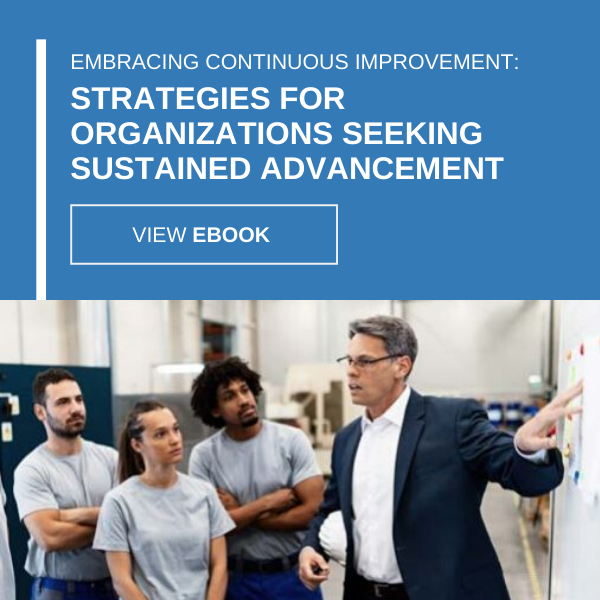
Process Improvements in Healthcare: The Right Care for Your Operations
The healthcare industry is in the midst of change and challenges, driven by a triple-whammy of technological innovation, the pandemic and the hiring and employment crisis. This triad is affecting how healthcare is delivered and who is delivering it.
Not only are wearable healthcare devices and telehealth changing the way the industry serves patients, but the explosion of this technology is putting increased demands on the manufacturers that make these devices. At the same time, the staffing shortage and pay equity debates that are hitting every other industry are bedeviling healthcare, too.
In the midst of it all, the industry is striving for optimal efficiency behind the scenes in the manufacturing sector and in the patient-facing realm as well. Not an easy task.
Healthcare trends for today and tomorrow
Let’s explore current healthcare trends and look at how USCCG can help healthcare manufacturers and providers level up with process improvements to roll with these changing tides.
Wearable devices + telehealth
These may seem like two separate areas of the industry, but it’s really a chicken-and-egg situation with wearable devices and telehealth. While they’d both exist without the other, the union of these two facets of the industry at the right time has been the catalyst for explosive change. And demand.
Personal healthcare devices are not new to the healthcare market. Internal devices like pacemakers have been keeping hearts beating for decades. So, too, diabetes checkers, wearable heart monitors and blood pressure machines allow patients to track their own numbers at home without going to a doctor’s office or clinic. But it’s one element of that — the ability to do it remotely, at home — that caused the market to rocket skyward. The catalyst? The pandemic.
When COVID hit and took hold, doctors needed ways to monitor the health of their patients without an in-person visit. Hospitals and clinics were overwhelmed with COVID cases and suddenly telehealth was the only option for people needing care that wasn’t an emergency.
The U.S. Department of Health and Human Services reported a 63-fold increase in telehealth visits during 2020, with patients utilizing wearable health devices like heart, blood pressure and diabetes monitors, among other devices. The wearable health device market is estimated to jump to $95.4 billion within the next five years.
Although this explosion was triggered by the pandemic, it is not going away as the virus recedes. Doctors found that 24/7 health data monitoring increased the quality of patient care. More information, better care, healthier people. All without the patient leaving home. It’s also a boon for people who live in rural areas without easy access to hospitals or clinics, making this trend nothing less than a blessing to the quality of life of people everywhere. It’s here to stay.
All of it is made possible by the manufacturers of these devices, many of whom found their operations overwhelmed by the increased demand.
AI and machine learning
The healthcare tech trend isn’t confined to telehealth and wearable devices. It has made its way into the clinic as well. Artificial intelligence, namely machine learning, in healthcare is growing rapidly. The market for this tech is predicted to be more than $20 million in 2023. Computer vision, pattern recognition algorithms, predictions of clinical trials and drug interactions, advanced imagery like MRI scans — all growing rapidly in this market. A bot making your diagnosis isn’t that far away. That medical device we’ve all seen on Star Trek, the tricorder? It’s basically here now. All of it can lead the industry to deliver more personalized treatments and diagnoses.
Employment and staffing
In addition to the healthcare tech explosion, the industry is dealing with a staffing crisis. A recent survey by the Medical Group Management Association found 58% of medical practices nationwide find staffing to be their biggest challenge. According to the survey, staffing outpaced the second most important concern, expenses, by an alarming 35 percentage points.
What’s behind the staffing shortages? A quick list:
- An aging population of healthcare workers retiring at the same time as the population at large — patients — are also aging and requiring more care.
- Nurse burnout brought on by the harsh schedules and hours during the pandemic.
- Not as many people entering the healthcare profession.
- Pay and benefits inequity.
All of these challenges require process improvements to get healthcare facilities and manufacturing plants running at peak efficiency. That’s where we come in.
Process optimization in healthcare manufacturing, USCCG-style
At USCCG, we specialize in helping manufacturers of all stripes transform their operations and processes into lean (or Lean) and mean operations, functioning at optimal efficiency levels.
Our expertise is working with organizations to improve business performance by increasing throughput, reducing costs, eliminating waste, increasing productivity, improving quality and leveraging existing assets.
To get there, we will typically focus on Lean Six Sigma methodologies, including:
- Reduced Waste: Aggressively minimizing or eliminating anything that does not add value
- Just Right: Right venue, right conditions, right resources
- Self-Sustainment: Culture of improvement without continuous top-level instigation
- Protected: Anticipation of unpredictable and fluctuating demand
- Provide your organization with the ability to better manage the cost component of delivering quality patient care
One key element in our approach that you may not find elsewhere: We get onto the floor and partner with your employees, the people who are doing the job day to day. And we encourage your upper management and C-suite execs to do the same.
But it’s not just about the manufacturing process. Our healthcare expertise is also about applying process improvements to hospital and clinic operations, too.
Beyond manufacturing
Healthcare manufacturing is not the only area that needs an efficiency boost. Hospitals and clinics are focusing on operational improvements as well.
When we work with healthcare clients, our goal is to improve and enhance healthcare facilities’ Management Operating System (MOS) — basically how they plan, schedule, assign work, follow up, report and drive continuous improvement processes.
Some of the areas we focus on:
- Customer/patient requirements
- Resources, instrumentation and technology
- Staffing levels and clinical requirements
- Planning and assignment of work
- Execution and follow-up
- Clinical and administrative requirements
- Root cause analysis and review
- Identifying the planning and tasks
- Developing a capacity model
- Reviewing of work
We help healthcare facilities standardize their processes, strive for continuous improvement and recognize operational lapses that can impact productivity, quality of care, capacity and customer service.
At USCCG, we are committed to partnering with the healthcare industry to create process improvements that ultimately result in streamlined, efficient operations. In the end, it’s about better patient outcomes. We’re proud to help bring that about.






